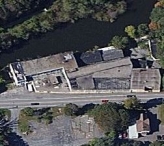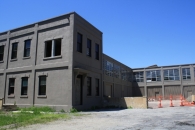Mill Record Litchfield
RETURN TO ‘FIND MILLS’Disclaimer: Content for these properties was compiled in 2014-2017 from a variety of sources and is subject to change. Updates are occasionally made under Property Information, however the Connecticut Trust for Historic Preservation (dba Preservation Connecticut) makes no representation or warranty that the information is complete or up-to-date.
- Complex Name (Common)
- Warren McArthur Corp.
- Complex Name (Historic)
-
- Bantam Manufacturing Co./Bantam Ball Bearing Co.
- Warren McArthur Corp.
- Address or Location
- 38 Bantam Lake Road, Bantam, Litchfield
- County
- Litchfield
- Historic Designation
- Associated Mill Community
- Historic Information
Companies Associated w/Complex
- Bantam Ball Bearing Co. 1917-1927
- Bantam Manufacturing Co. 1905-1917
- Warren McArthur Corp. 1937-1949
Use (Historic)
Largest Documented Workforce
1500 (1945)
Historic Narrative
NOTE: DETERMINED ELIGIBLE FOR SR LISTING IN 2020 BY SHPO. The Bantam Manufacturing Company was organized in 1905 and produced ball bearings. Later known as the Bantam Anti-Friction Company, it was incorporated in 1917 as the Bantam Ball Bearing Company, focusing on the production of automotive bearings. In 1926, the firm was sued by the Welworth Automotive Company of New York City for failing to meet the demands of a contract. As a result, in August of that year the company was served a Writ of Attachment, which seized all of its assets; the board of directors applied for and was granted a government receivership. Bantam Ball Bearing Company began looking for a new home later that year, and moved to South Bend, Indiana, in 1927 to be closer to the automotive industry. Ironically, in 1935, the Bantam Ball Bearing Company of South Bend, Indiana, was sold to the Torrington Company of Torrington, Connecticut. In 1937, the old ball bearing factory, along with the 90-acre Scott Bowen farm, was purchased by the Warren MacArthur Corporation of Rome, New York. The company was started by Warren McArthur (1885-1961), an Art Deco furniture designer from Chicago. McArthur’s family home was designed by Frank Lloyd Wright. McArthur studied mechanical engineering at Cornell, graduating in 1908. From 1911 to 1914 he filed nearly a dozen patents, at least one of which is still in production today. In 1929, McArthur moved to Los Angeles where he started to produce metal furniture; his products, which featured unfading paint and a lifetime guarantee, became immensely popular in California. In 1933, after the death of his father, McArthur moved his company to Rome, New York. Warren McArthur Corp. moved into the Bantam facility in 1938 after renovations. The company’s experience using light aluminum framing in its furniture led to contracts with the United States government during the Second World War to design and produce aircraft seats. Before the war, the company had employed approximately 28 people; by 1945 that number had grown to over 1,500. It was estimated that Warren McArthur produced between 75 and 85 percent of all seats used in American military aircraft. Aside from the sheer number of seats produced in Bantam, McArthur’s most notable technological contribution was the design of seats made from a magnesium alloy tubing which saved precious war-needed materials. While light, the seats were strong, meeting structural tests for loads exceeding 2,400 pounds. General Douglas McArthur’s command chair in Japan was built at the Bantam plant. After the war, Warren McArthur began to produce seats for commercial airlines, however it went out of business by 1949.
- Architectural Information
Number of Existing Buildings
Roughly (8) eight blocks.
Dates of Construction
c.1915, c. 1941
Architect
n/a
Builder
n/a
Building Type
Architectural Description
Little survives unaltered from the Bantam Ball Bearing Company’s occupancy from 1900 to 1926. The oldest structure is a c.1915 two story-concrete office building. Other, primarily concrete, buildings survive but were extensively altered by the Warren McArthur Inc., during World War II. The main reinforced concrete blocks have full bay steel (or aluminum) frame 36-pane windows, above which is a plain entablature.
Exterior Material(s)
Structural System(s)
Roof Form
Roof Material
n/a
Power Source
Condition
Good, Fair, Deteriorated
Condition Notes
The building has been stuccoed.
- Property Information
-
Specific Location
One 1.75 acre parcel at the southwest corner of Bantam Lake Road and Bantam Road (Rte 202), bordered to the west and south by the Bantam River.
Adjacent To
Exterior Visible from Public Road?
Yes
Parcel ID / Assessor Record Link
- 167/ 73/ 142 / Link →
Acreage
1.75
Use (Present)
- Sources
-
Form Completed By
Michael Forino
Date
August 2014
Bibliography
- 1947 Industrial Directory of Connecticut.
- The Hartford Courant, 1904-1949.
- Sanborn Fire Insurance Maps, Litchfield, 1923-1943.
- Representative View(s)Click on image to view full file





